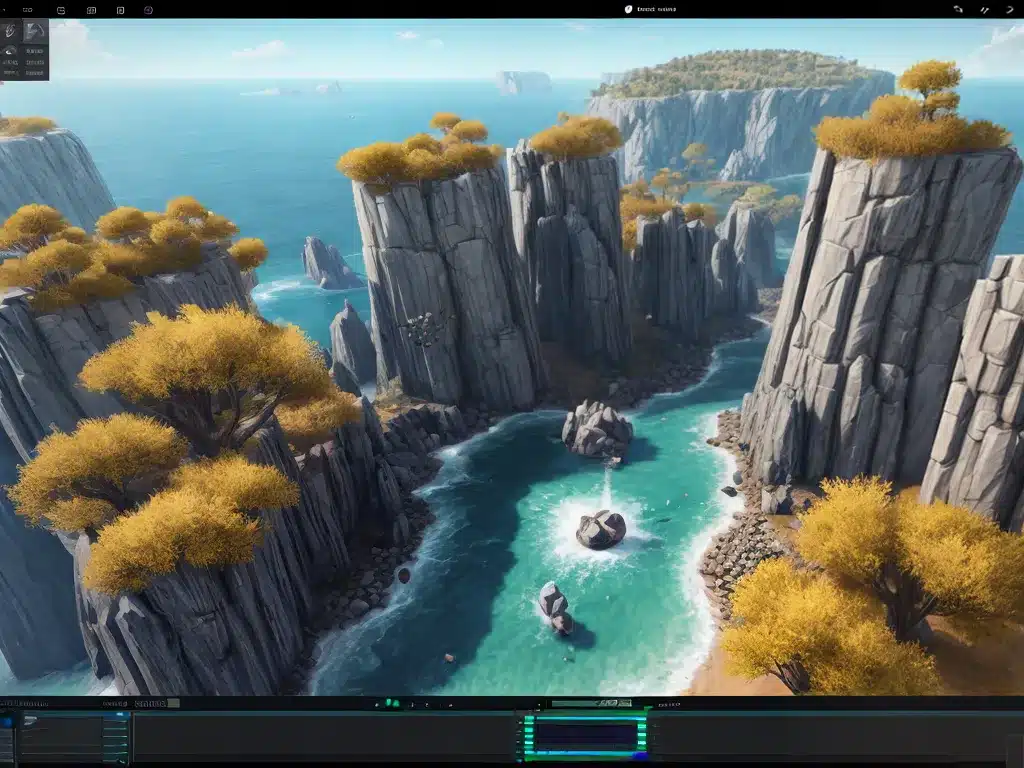Introduction
Unity is one of the most popular game engines for building 2D and 3D games. With each new release, Unity aims to provide developers with tools and features to help them create visually stunning games more efficiently. In this article, I will explore some of the key new features in recent Unity versions that enhance visuals and streamline game development.
Graphics and Visuals
High Definition Render Pipeline (HDRP)
The High Definition Render Pipeline (HDRP) is a new unified graphics pipeline introduced in Unity 2018. It provides high-fidelity graphics with enhanced lighting, materials, and post-processing effects.
Some key features of HDRP include:
-
Physically-based rendering – Materials behave realistically based on real-world physical parameters like base color, metallicity, smoothness etc. This results in realistic and consistent lighting behavior.
-
Volumetric lighting – Realistic fog and atmospheric scattering effects using ray marching techniques. This creates immersive environments.
-
Dynamic resolution – Automatically adjusts render resolution to maintain frame rate.Ensures optimal graphics quality within performance constraints.
-
Native integration of NVIDIA RTX ray tracing – Enables photorealistic real-time ray traced reflections, shadows, global illumination and ambient occlusion.
With HDRP, I can achieve cinema-quality visuals and lighting in my games. The unified pipeline also makes it easier to achieve consistent visuals across platforms.
Visual Effect Graph
The Visual Effect Graph, introduced in Unity 2019.1, provides a node-based system for creating stunning visual effects using a visual node workflow instead of code.
Key features include:
- Intuitive drag-and-drop interface for building complex effects visually.
- Wide range of operator nodes for tasks like spawning particles, adding physics, and more.
- Shader Graph integration for custom looks and behaviors.
- Real-time preview for rapidly iterating on effects.
With the Visual Effect Graph, I can quickly prototype and iterate on effects like smoke, fire, explosions, trails etc. without coding. I can get AAA-quality VFX up and running in minutes!
Tools for Easier Game Development
Unity provides several tools and features to streamline various aspects of game development.
Prefabs and Nested Prefabs
Prefabs allow me to create, configure, and store GameObjects to reuse throughout my project. With Nested Prefabs introduced in Unity 2018.3, I can now nest Prefabs inside other Prefabs.
Benefits include:
- Modular and reusable architectures.
- Changes to nested Prefabs apply across all instances.
- Overrides allow customizing Prefab instances.
- Easier to understand complex Prefab hierarchies.
With nested Prefabs, I can develop complex games faster by composing systems out of modular building blocks.
Visual Scripting with Bolt
Bolt, added in Unity 2019.1, allows me to create game logic and mechanics without coding using a visual node-based workflow.
Key features:
- Intuitive drag-and-drop scripting.
- Wide range of logic nodes for Tasks, Variables, Operators etc.
- State units for encapsulating state machines.
- Graphs for encapsulating complex logic.
- Built-in debugging tools.
With Bolt, I can quickly prototype gameplay mechanics, gameplay effects, character controllers etc. without writing code. I can focus on the logic rather than syntax.
Progressive Lightmapper
The Progressive Lightmapper, introduced in Unity 2018.2, is an iterative GI baking system that allows me to keep working while global illumination is baking in the background.
Benefits:
- Bake lighting incrementally instead of waiting.
- View and update lights and materials during baking.
- Fix lighting errors quickly without rebaking from scratch.
- Works with all Unity render pipelines.
The Progressive Lightmapper saves me a lot of time. I can iterate rapidly on scene lighting with real-time feedback instead of disruptive rebakes.
Conclusion
Recent Unity updates have added powerful graphical features like HDRP and VFX Graph for achieving cutting-edge visuals. Productivity tools like nested Prefabs, Visual Scripting, and Progressive baking enable faster prototyping and iteration. With these new features, I can spend less time on implementation details and more time creating engaging player experiences. Unity continues to evolve into an extremely well-rounded, flexible game engine suitable for almost any project.













